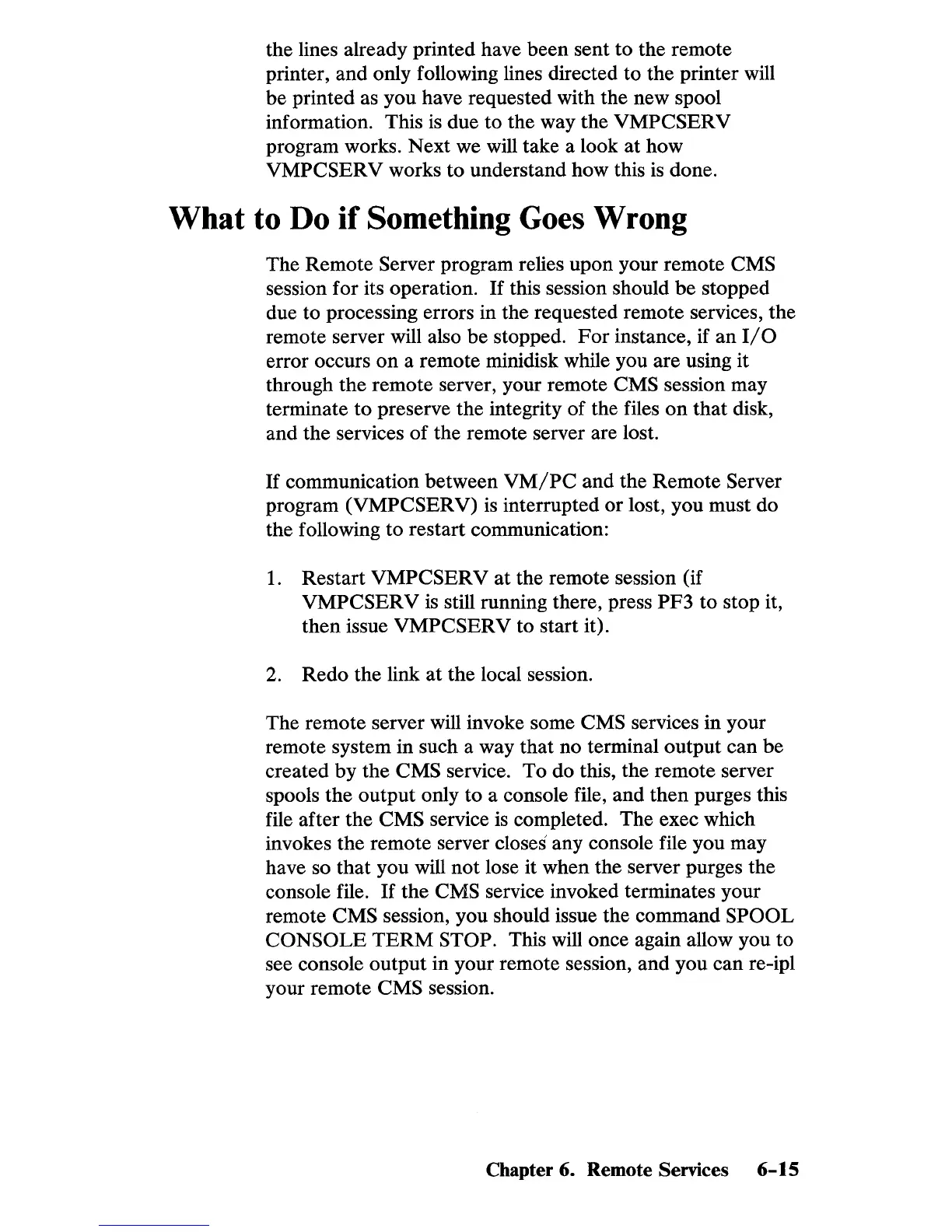the lines already printed have been sent
to
the remote
printer, and only following lines directed to the printer will
be printed as you have requested with the new spool
information. This
is
due to the way the VMPCSERV
program works. Next we will take a look at how
VMPCSERV works to understand how this
is
done.
What to
Do
if
Something Goes Wrong
The Remote Server program relies upon your remote CMS
session for its operation.
If
this session should be stopped
due to processing errors in the requested remote services, the
remote server will also be stopped.
For
instance, if an
1/0
error occurs
on
a remote minidisk while you are using it
through the remote server, your remote
CMS session may
terminate to preserve the integrity of the files
on
that disk,
and the services
of
the remote server are lost.
If
communication between
VM/PC
and the Remote Server
program (VMPCSERV)
is
interrupted
or
lost, you must do
the following to restart communication:
1.
Restart VMPCSERV at the remote session (if
VMPCSERV
is
still running there, press PF3 to stop it,
then issue
VMPCSERV to start it).
2. Redo the link at the local session.
The remote server will invoke some
CMS services in your
remote system in such a way that no terminal output can be
created by the
CMS service. To do this, the remote server
spools the output only to a console file, and then purges this
file after the
CMS service
is
completed. The exec which
invokes the remote server closes any console file you may
have so that you will
not
lose it when the server purges the
console file.
If
the CNIS service invoked terminates your
remote
CMS session, you should issue the command SPOOL
CONSOLE
TERM
STOP. This will once again allow you to
see console output in your remote session, and you can re-ipl
your remote
CMS session.
Chapter 6. Remote Services
6-15

